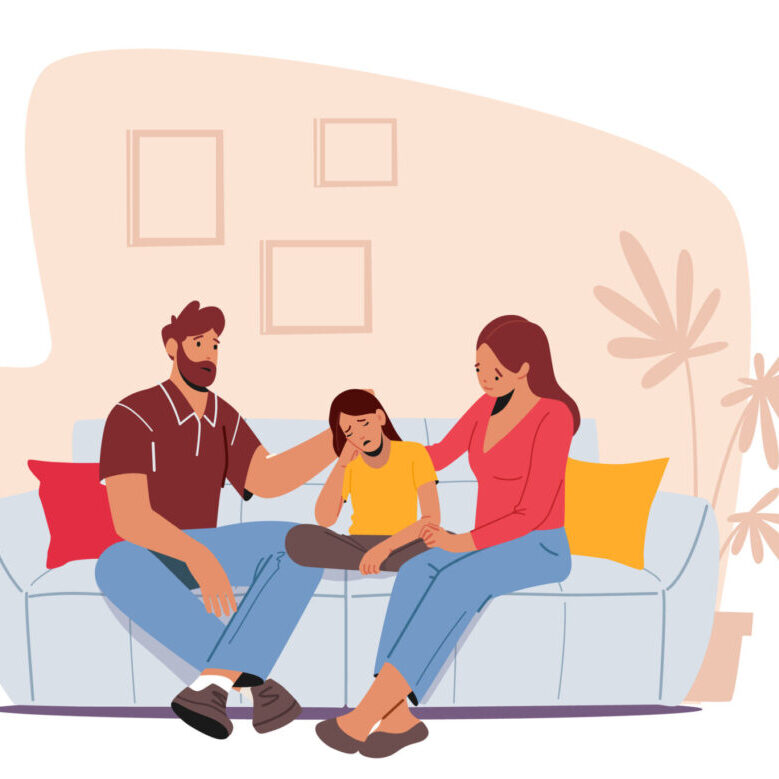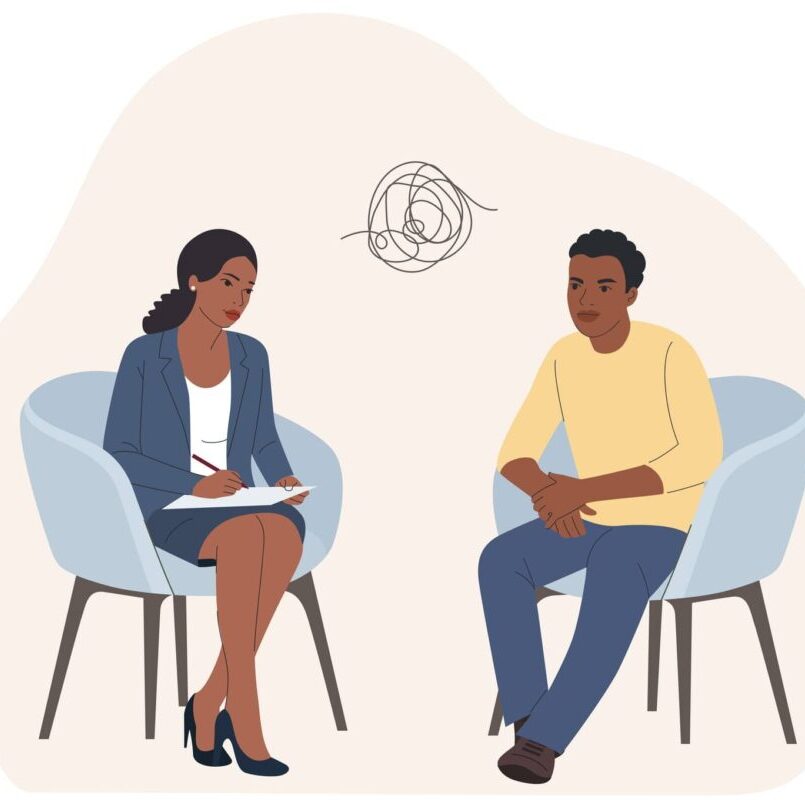Polyamory and Boundaries: Setting Healthy Limits

The choice to have an open structure to romantic relationships can seem like a natural choice for some, and for others, it is a choice that needs additional thought and intentionality. Many who identify as polyamorous or choose a consensually non-monogamous relationship do so for a variety of reasons.
For example, some choose an open relationship out of a desire to meet and form connections with others. Some explore various kinds of sexual or erotic experiences not available in a monogamous relationship.
Others choose an open relationship due to other limitations such as a partner’s disability or due to extensive travel. Still, others find polyamory to be a natural state, one that does not allow for monogamy or serial monogamy.
For those in Chicago who need more support, seeking counseling or therapy to assist can be an effective strategy to navigate what boundaries in polyamory can be established and how to maintain them.
Learning the communication skills and relationship techniques that can enhance and support a polyamorous relationship can be developed in polyamory therapy and counseling.
Open relationships require a shift in approach and mentality about relationships as they challenge traditional monogamous relationship dynamics, including a sense of ownership or possession, by re-centering connection, pleasure, and responsible autonomy.
A successful shift in this mentality can open individuals and partnerships to a greater level of understanding of one’s thoughts and feelings and can expand the sources of love and affection sought and gained. Whether polyamory is a natural part of you or a decision you have come to, communication and boundaries are a necessary component.
The structure of a relationship can take many forms and represent a confluence of gender roles, sexual pleasure, values, sexual identities, and many other factors. So, let’s first get some consensus on language and labels:
Open relationships – the structure – are those relationships that have more permission or flexibility for members to seek out emotional or sexual connections with others.
Consensual non-monogamy – as a practice – is a catch-all term that seeks to encapsulate open relationships in which all partners have agreed to and are aware of additional relationships or sexual practices.
Polyamory, or one’s openness or capacity for love for more than one person at a time, is generally in reference to a person’s overall romantic or affectional identity. Polyamorous relationships are those that allow for partners to establish romantic connections and relationships in addition to a “primary” relationship – if a “primary relationship” is even a part of the dynamics.
Each of these is also influenced by a person’s sexual orientation (e.g., bisexual, gay/lesbian, pansexual, straight). (You can learn more about these distinctions here: Sex vs. Gender vs. Sexuality – Society for Sexual, Affectional, Intersex, and Gender Expansive Identities (sage counseling.org)) or meet other Chicagoans interested in Polyamory via Poly Chicago or Reddit’s Poly Chicago Friends thread.
Some examples of how these practices can look include a polyamorous relationship that may consist of three people and be considered a closed relationship in which the three persons only have sex with one another. Or a couple may choose to “swing” together and have sex with an occasional third or another couple but agree to additional romantic partners.
A bisexual person may be married to a person of another gender and date others of the same gender. The point is, that polyamorous and open relationships can take on a variety of structures, and practices, and include (or not) other people short- and long-term.
Whether you consider yourself polyamorous or are interested in exploring more diverse kinds of sexual or erotic experiences within an established relationship, it is important to have clarity and consistency in how you seek out these connections.
Traditional monogamous relationships bring inherent rules and boundaries, and therefore couples can know from the outset how to navigate establishing relationship parameters. Polyamory boundaries and relationships require intentional communication to establish rules and boundaries.
Rules, Boundarying and Negotiations
Within polyamorous and open relationships, rules and boundaries are often used synonymously. “Rules” can be thought of as those parameters that provide structure to the relationships. “Boundaries” can be thought of as the aspects that give rules clarity. One of the more important lessons to understand about boundaries is that they are not about controlling another person’s behaviors.
Rather, boundaries are the parameters a person establishes for themselves that outline and define what limits they have. Regardless, boundaries are mutually agreed upon and meant to be respected. For example, a rule in an open relationship might be that partners have the freedom to meet up with and have sex with others, and a boundary might be “no sleepovers”.
Boundaries can also include other aspects of relationships. For example, whether partners may establish emotional boundaries about maintaining contact with a former sexual partner; boundaries around finances (e.g., who pays for dates or trips); boundaries around safer sex practices (e.g., taking PrEP and regular testing for STIs); or boundaries around dating mutual friends.
The interaction of rules and boundaries is specific to the partnership and can be negotiated over time. Regardless of the rules and boundaries established, their use and functions are to create safety and security and ensure trust and communication.
Like other dynamic areas of life, negotiations may need to occur to ensure longevity. The same holds true for polyamorous and open relationships. Circumstances, changes in desires or needs, and a plethora of other considerations may result in polyamory boundaries being re-negotiated.
Negotiations should always consider the responsible autonomy of each part, and parties would be wise to be aware of how negotiations progress. For example, do you (or a partner) find the negotiations to be more limiting or controlling? Do the negotiations allow and foster greater communication? Do the negotiations grant more possibilities for exploration or another person? It is not only the content of the negotiations themselves, but also the process.
Strategies for Successful Polyamory
If you are interested in opening an existing relationship or are exploring polyamory or polyamory therapy, here are some helpful starting points or refreshers:
- Have an understanding of what you want in relationships: To know if non-monogamy is right for you is an essential component of being in a polyamorous relationship.
Engage in self-reflection and do some research to understand if you can manage the dynamics of a polyamorous relationship. Do some research through reading or talking to others who are in polyamorous relationships to gain insight into what it can be like, including positives and potential stressors.
Ask yourself questions like: Do I know what my relationship patterns are? Am I okay with being one of my partner’s partners? How much do I want to be included in my partner’s other relationships or what is the minimal communication? - Know what your attachment needs are: It is by no means necessary for someone to have extensive counseling to be in a successful open or polyamorous relationship.
However, having a sound understanding of what your attachment needs are can assist in teasing out feelings of jealousy and Compersion. Polyamory therapy can your self-awareness and develop emotion regulation skills to manage emotions such as jealousy.
Jealousy and attachment needs are powerful motivators for behavior, and not understanding these within yourself can leave you prone to emotional pain. As polyamory and non-monogamous relationships can take many forms, consider the nuances and distinctions between sexual and romantic relationships.
Consider discussions such as: How do I feel about my partner forming an emotional connection with someone else or having sex with someone else? Do we have sex together or separately? - Be honest and forthcoming: Clarity and consistency with boundaries is the best way to ensure boundaries are respected. If you are considering opening an established relationship, give yourselves time to communicate and explore the potential positives and limitations.
Identify what kind of progressive steps could be taken, and what aspects can be “held off on” until familiarity and comfort are established. Additionally, boundaries related to sexual health are essential, and honest communication about the frequency and results of testing is essential that health and safety are ensured. - Communicate: It can sound cliché, but communication is key in polyamorous and open relationships. When boundaries or rules need to be renegotiated, speak to what needs to be changed, altered, or re-established within boundaries.
But remember, boundaries are about ourselves and not about controlling or infringing on another’s responsible autonomy. Using communication skills and emotional regulation skills can ensure that conversations or negotiations are clear and direct. - Develop Emotional Awareness and Regulation Strategies: One of the more commonly cited emotions connected with polyamory and open relationships is jealousy. This emotion can be difficult and uncomfortable and can lead to other feelings such as inadequacy and insecurity. Polyamorous relationships do not deny the existence of jealousy, insecurity, or loneliness, as these emotions are natural and human.
Rather, these emotions can serve as opportunities to promote re-connection and dialogue among partners. Open relationships function more effectively when partners are open and communicative about these emotions, worries, and concerns.
Open and polyamorous relationships can also elicit emotions such as elation, liberation, and compersion, or the enjoyment one experiences seeing a partner with another person. Compersion is often referred to as jealousy’s “opposite”. - Seek help: when you need assistance either in understanding yourself in the context of a polyamorous or open relationship, seek help! Though polyamory therapy specialists might be most helpful, counselors and therapists alike are well-versed in communication strategies and how to establish and maintain boundaries.
Boundaries in polyamory are necessary to ensure emotions and overall health. Whether you have been successfully navigating polyamory or if you are new or considering polyamory, remember that jealousy and attachment are natural human emotions, but they do not need to disrupt polyamory or end a relationship. Boundaries that are communicated and maintained can ensure all parties are able to seek and gain the love, affection, or pleasure they want.
This blog is made for informational and educational purposes only. It is not medical advice. The information in this blog is not intended to (1) replace a one-on-one relationship with a qualified licensed health care provider, (2) create or establish a provider-patient relationship, or (3) create a duty for us to follow up with you.



